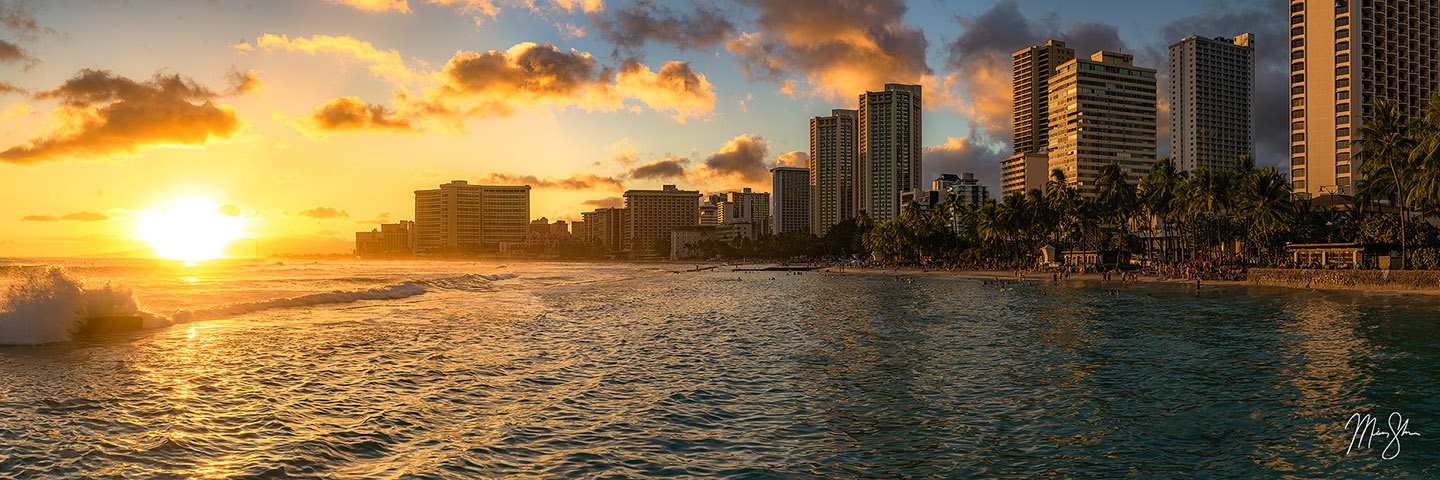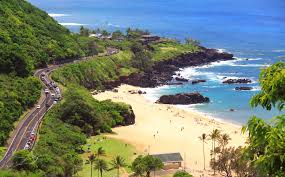Captivating Sunset Views in Waikiki

The Magic of Sunset in Waikiki
Waikiki, known for its stunning beaches and vibrant atmosphere, is also home to some of the most breathtaking sunsets in the world. As the sun dips below the horizon, casting a golden glow over the ocean and painting the sky in hues of pink, orange, and purple, visitors and locals alike gather to witness this daily spectacle.
One popular spot to watch the sunset in Waikiki is from the iconic Duke Kahanamoku Statue on Kuhio Beach. With Diamond Head in the background and the sound of waves crashing against the shore, it’s a picture-perfect setting to end the day.
For those looking for a more serene experience, taking a sunset cruise off the coast of Waikiki offers a unique perspective of the sun setting over the water. The gentle rocking of the boat combined with panoramic views of Waikiki Beach creates a truly magical moment.
Whether you choose to watch the sunset from land or sea, one thing is certain – experiencing a Waikiki sunset is an unforgettable experience that will leave you in awe of nature’s beauty.
Your Guide to Enjoying the Sunset in Waikiki: Top FAQs Answered
- What time does the sunset in Waikiki?
- Where is the best spot to watch the sunset in Waikiki?
- Are there any sunset cruises available in Waikiki?
- Can you see Diamond Head during the sunset in Waikiki?
- Is it crowded during sunset at Waikiki Beach?
- Are there any recommended restaurants with a view of the sunset in Waikiki?
- What colors can you expect to see during a typical sunset in Waikiki?
- Are there any special events or celebrations that coincide with the sunset in Waikiki?
What time does the sunset in Waikiki?
The time of sunset in Waikiki varies throughout the year due to the changing position of the sun in the sky. On average, the sunset in Waikiki occurs between 6:00 PM and 7:30 PM local time. However, it is important to check a reliable source such as a weather app or local sunset chart for the specific sunset time on the day you plan to visit. Watching the sun dip below the horizon in Waikiki is a magical experience that should not be missed, so be sure to plan your visit accordingly to witness this natural spectacle.
Where is the best spot to watch the sunset in Waikiki?
When it comes to finding the best spot to watch the sunset in Waikiki, one popular recommendation is from the Duke Kahanamoku Statue on Kuhio Beach. This iconic location offers a picturesque view of the sun setting over the ocean with Diamond Head in the background, creating a postcard-worthy scene that captures the essence of Waikiki’s beauty. The combination of golden hues reflecting off the water and the soothing sound of waves crashing against the shore makes this spot a favorite among both locals and visitors seeking a memorable sunset experience in Waikiki.
Are there any sunset cruises available in Waikiki?
Yes, there are several sunset cruises available in Waikiki that offer a unique and memorable way to experience the beauty of the sunset over the ocean. These cruises typically depart from Waikiki Beach and take passengers on a leisurely journey along the coastline, providing stunning views of the sun setting over the water. Whether you prefer a catamaran sail, a luxury yacht experience, or a traditional Hawaiian outrigger canoe ride, there are options to suit every preference. Sunset cruises in Waikiki often include amenities such as onboard entertainment, complimentary drinks, and even dinner options for a complete evening of relaxation and enjoyment on the water.
Can you see Diamond Head during the sunset in Waikiki?
One frequently asked question about watching the sunset in Waikiki is whether you can see Diamond Head during this magical moment. The answer is yes! Diamond Head, the iconic volcanic tuff cone located near Waikiki Beach, serves as a stunning backdrop for the sunset. As the sun dips below the horizon, its golden rays illuminate Diamond Head, creating a picturesque scene that adds to the beauty of the sunset experience in Waikiki. Watching the sun set behind Diamond Head is a must-see sight that captures the essence of Hawaii’s natural beauty and charm.
Is it crowded during sunset at Waikiki Beach?
During sunset at Waikiki Beach, it is common for the area to be crowded as both locals and tourists gather to witness the stunning spectacle. The beachfront and surrounding areas can get quite busy as people stake out their spots to watch the sun dip below the horizon. Despite the crowds, the vibrant energy and sense of community add to the experience, making it a lively and memorable event. It’s recommended to arrive early to secure a good viewing spot and fully immerse yourself in the beauty of a Waikiki sunset amidst the bustling atmosphere.
Are there any recommended restaurants with a view of the sunset in Waikiki?
For those seeking a memorable dining experience with a view of the sunset in Waikiki, there are several recommended restaurants that offer stunning vistas of the evening sky painting the horizon. One popular choice is House Without a Key at Halekulani, where guests can enjoy Pacific Rim cuisine while watching the sun set over Diamond Head. Another option is Top of Waikiki, a revolving restaurant located atop the Waikiki Business Plaza, providing panoramic views of the city and coastline as the sun dips below the ocean. These restaurants not only offer delicious meals but also create an ambiance that enhances the beauty of Waikiki’s sunset, making it an unforgettable culinary experience.
What colors can you expect to see during a typical sunset in Waikiki?
During a typical sunset in Waikiki, you can expect to see a stunning display of colors painting the sky. As the sun descends below the horizon, you may witness a spectrum of hues ranging from vibrant oranges and pinks to soft purples and blues. The reflection of these colors on the ocean’s surface adds an extra layer of beauty to the scene, creating a mesmerizing sight that captures the essence of a Waikiki sunset. Be prepared to be amazed by nature’s artistry as you watch the sky transform before your eyes during this magical time of day.
Are there any special events or celebrations that coincide with the sunset in Waikiki?
During sunset in Waikiki, visitors can often witness special events or celebrations that enhance the magical atmosphere. From beachfront luaus to live music performances, there are various activities that coincide with the setting sun. Some hotels and resorts in Waikiki also host sunset cocktail parties or yoga sessions on the beach to provide a unique and memorable experience for guests. Additionally, cultural events or festivals may take place during sunset hours, offering a chance to immerse in Hawaiian traditions while enjoying the stunning views of the sun dipping below the horizon. Whether it’s a traditional hula performance or a beachside fire dance, there are plenty of opportunities to make the most of your sunset experience in Waikiki.


